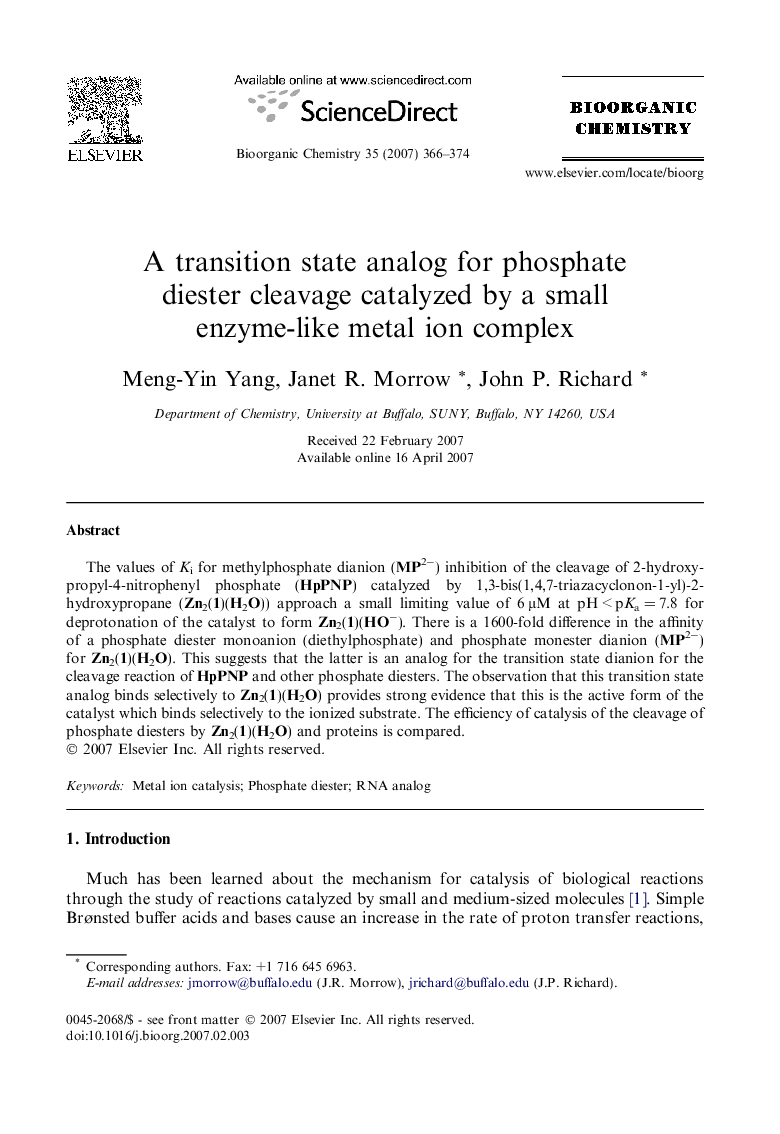| Article ID | Journal | Published Year | Pages | File Type |
|---|---|---|---|---|
| 1356601 | Bioorganic Chemistry | 2007 | 9 Pages |
The values of Ki for methylphosphate dianion (MP2−) inhibition of the cleavage of 2-hydroxypropyl-4-nitrophenyl phosphate (HpPNP) catalyzed by 1,3-bis(1,4,7-triazacyclonon-1-yl)-2-hydroxypropane (Zn2(1)(H2O)) approach a small limiting value of 6 μM at pH < pKa = 7.8 for deprotonation of the catalyst to form Zn2(1)(HO−). There is a 1600-fold difference in the affinity of a phosphate diester monoanion (diethylphosphate) and phosphate monester dianion (MP2−) for Zn2(1)(H2O). This suggests that the latter is an analog for the transition state dianion for the cleavage reaction of HpPNP and other phosphate diesters. The observation that this transition state analog binds selectively to Zn2(1)(H2O) provides strong evidence that this is the active form of the catalyst which binds selectively to the ionized substrate. The efficiency of catalysis of the cleavage of phosphate diesters by Zn2(1)(H2O) and proteins is compared.
Graphical abstractFigure optionsDownload full-size imageDownload as PowerPoint slide
